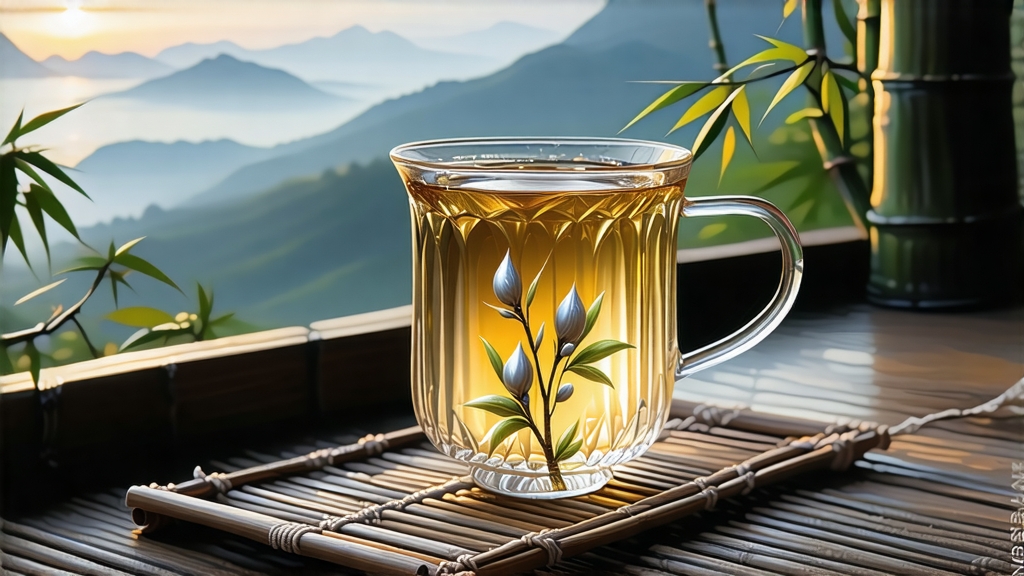
If green tea is the exuberant youth of Chinese tea and pu-erh the wise elder, then Fuding White Needle (Bai Hao Yin Zhen) is the contemplative poet who arrives at dusk, speaks softly, and stays long after the candles have burned low. Revered as the apex of white tea, it is picked only between mid-March and early April, when the air is still cool enough to pearl into morning dew and the tea bushes, mostly Fuding Da Bai and Da Hao cultivars, awake from winter dormancy with unprecedented vigor. What follows is a journey that begins in the granite soils of northern Fujian’s Taimu mountain range and ends in a translucent liquor that smells of fresh alfalfa, wet stone, and the faintest trace of narcissus.
Historical whispers
White tea’s documented pedigree stretches back to the Song dynasty (960-1279), when imperial tribute lists first mentioned “white cakes” pressed from large-leaf tea growing along the Min River. Yet the singular praise of needle-shaped buds appears only in the late Ming, when loose-leaf infusion replaced whipped powder and the court sought subtler fragrances. Fuding county, ring-fenced by fog-clad peaks and rinsed by the East China Sea, became the chosen cradle. Maritime trade during the Qing carried these silvery buds to Southeast Asia and, later, to European apothecaries who marketed them as “white down tea” prized for cooling the blood during cholera outbreaks. Thus, long before antioxidants were quantified, White Needle was already a global remedy wrapped in myth.
From garden to tray: the making
The genius of White Needle lies in what is refused: no pan-firing, no rolling, no roasting. Pickers break dawn to select only the unopened bud and the immediate first leaf, criteria so strict that a kilo of finished tea demands roughly thirty thousand pluckings. The harvest is then laid, never piled higher than three centimeters, on bamboo trays woven by village craftsmen whose families have twisted bamboo slivers for three centuries. For thirty-six to forty-eight hours the buds rest in shade, then sun, then shade again, while enzymes quietly oxidize the leaf edges to a toasted cream color and lock the center in jade. Finally, a charcoal-free warm air dryer holds the leaf at 40 °C, arresting moisture at 5 % and preserving the velvet of protective hairs that give the tea its name—“silver needle.” The entire choreography is less manufacture than chaperoning: nature leads, the tea master merely keeps time.
Terroir in a sip
Taimu’s soils are acidic, laced with quartz and feldspar that drain monsoon rains within hours; roots therefore dive deep, mining potassium and fluorine that translate into a faint marine snap on the palate. Proximity to the sea also gifts nightly fogs which slow photosynthesis, elevating theanine and reducing bitter catechins. The result is a liquor so gentle it can feel almost hollow on first encounter—until you notice the way it coats the gums and leaves a returning sweetness, or hui gan, that arrives like tide water three minutes after swallowing. In professional cupping we call this “length,” and White Needle can stretch thirty seconds longer than most green teas, a persistence that earns it comparisons to fine Chablis.
How to brew without bruising
Western manuals often recommend boiling water and five-minute infusions, a treatment that scorches the hairs and turns the brew into hay. Instead, treat the buds like chilled sake. Use a tall clear glass or a small porcelain gaiwan pre-warmed to 75 °C. For every 150 ml, allow two grams—roughly fifteen buds. Pour the water in a high, thin stream so the needles tumble like snowflakes, then pause. Do not cover; let the aroma lift. After forty-five seconds decant completely into a fairness pitcher. The first infusion is pale platinum with a scent of cucumber skin. Second infusion, extend to fifty-five seconds; liquor turns to very light amber and releases a hint of toasted rice. By the fifth infusion you may push temperature to 85 °C and time to two minutes, coaxing beeswax and almond milk. Quality lots will yield eight clear infusions before surrendering, a stamina that belies their delicacy.
Tasting ritual for the quiet-minded
Professional evaluation follows three axes: aroma